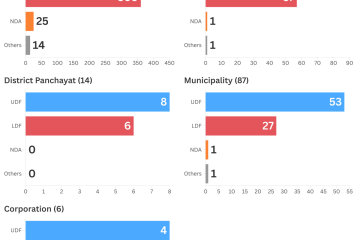Madhya Pradesh vs Kerala: A Comprehensive Comparison

Introduction
Madhya Pradesh and Kerala are two prominent states in India, each with distinct features that appeal to tourists, investors, and residents alike. Madhya Pradesh, located in central India, is known for its rich history, ancient temples, and wildlife. On the other hand, Kerala, situated in the southwestern part of the country, is famous for its lush green landscapes, backwaters, and vibrant culture. Understanding the differences between these two states is essential for anyone looking to explore or invest in diverse regions of India.
Cultural Diversity
Cultural heritage plays a significant role in defining both Madhya Pradesh and Kerala. Madhya Pradesh is home to several UNESCO World Heritage Sites, including the Khajuraho temples and Sanchi stupas. The state hosts numerous festivals like Navratri and Diwali, showcasing its diverse traditions and customs.
In contrast, Kerala’s culture is influenced by its unique geographical features and has a strong maritime heritage. The state is renowned for its folk dances such as Kathakali and Mohiniyattam, as well as its annual Onam festival, which celebrates harvest and unity.
Economic Aspects
Economically, Madhya Pradesh is primarily agricultural, contributing significantly to the production of soybeans, wheat, and rice. The state is also investing heavily in infrastructure development, which has attracted various industries, making it a growing economic center.
Kerala, however, has a robust service-oriented economy relying on tourism, remittances from the Gulf, and a well-developed education system. The state’s health tourism sector has seen substantial growth, making it a favored destination for wellness programs and Ayurvedic treatments.
Climate and Geography
The geographic layout of Madhya Pradesh consists of plateaus and hills, with a climate that varies from tropical to subtropical. The state experiences three distinct seasons: summer, monsoon, and winter, which influence its agricultural practices.
Keralas’ landscape is primarily coastal and influenced by the Arabian Sea. The state has a tropical climate characterized by heavy rainfall during the monsoon and mild winters, making it suitable for a variety of crops, including spices and coconuts.
Conclusion
The comparison between Madhya Pradesh and Kerala showcases the rich diversity that India offers. While one state captivates with its historical heritage and agricultural potential, the other enchants with its natural beauty and thriving service economy. For investors and travelers alike, choosing between these two regions depends on individual preferences—be it culture, climate, or economic opportunity. As India continues to develop, the unique attributes of each state will likely play a crucial role in shaping their futures and contributions to the country’s growth.









